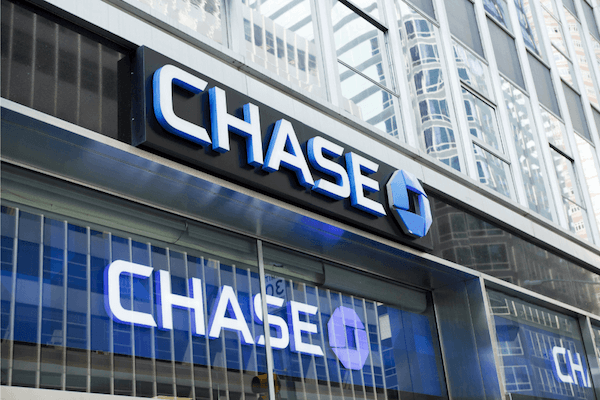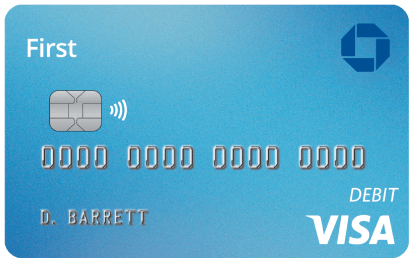
Chase Bank, headquartered in downtown Manhattan (New York City), is the largest bank in the United States with nearly $3.4 trillion in assets and 4,700 branch locations throughout the country.
Their CD (certificate of deposit) rates are in line with the other large national banks (Bank of America, Citibank, U.S. Bank and Wells Fargo, but are slightly behind some of the best offers from online banks and credit unions with nationwide acceptance.
Chase Bank’s best CD rates are now only available as “Relationship Rates” meaning you must have a linked personal checking account to receive the advertised APY (annual percentage yield). If you do not have a checking account with Chase, you’ll earn just 0.01% APY on all CD terms per the time of this writing. You can download their rate sheet (PDF here) for more details.
Chase Bank CDs come with terms ranging from 1 months to 10 years and can be opened online if you’re an existing Chase customer with a personal checking account or within a local branch regardless of whether you bank with Chase currently.
To see if Chase Bank CDs are right for you, continue reading our review below.
Chase Bank CD Rates + Account Details

Chase Bank is member FDIC and all consumer deposits are federally insured up to $250,000 per depositor or $500,000 for joint accounts.
All Chase Bank CDs require a minimum deposit of $1,000 to open, however their CDs are tiered based on deposit size with higher deposits earnings better yields in some cases.
The deposit tiers are as follows:
- $1,000 to $9,999.99,
- $10k to $24,999.99,
- $25k to $49,999.99,
- $50k – $99,999.99,
- $100k to $249,999.99 and
- $250k plus.
CD Rates
The CD rates listed below were surveyed on September 15 , 2023. The rates apply to those with a linked personal checking account with Chase Bank. As noted, Chase CDs for non-Chase customers only provide a yield of 0.01% APY across all terms.
| CD Term | APY ($0 – $9,999) | APY ($10k – $99,999) | APY ($100K +) |
| 1 month | 0.02% | 0.02% | 0.02% |
| 2 month | 0.02% | 0.02% | 0.02% |
| 3 month | 3.00% | 3.00% | 3.00% |
| 6 month | 4.00% | 4.00% | 5.00% |
| 9 month | 0.02% | 0.05% | 0.05% |
| 12 month | 3.00% | 3.00% | 3.75% |
| 15 month | 0.02% | 0.05% | 0.05% |
| 18 month | 0.02% | 0.05% | 0.05% |
| 21 month | 0.02% | 0.05% | 0.05% |
| 24 month | 2.00% | 2.00% | 2.00% |
| 30 month | 1.50% | 1.50% | 1.50% |
| 36 month | 2.00% | 2.00% | 2.00% |
| 42 month | 1.50% | 1.50% | 1.50% |
| 48 month | 1.50% | 1.50% | 1.50% |
| 60 month | 1.50% | 1.50% | 1.50% |
| 84 month | 1.50% | 1.50% | 1.50% |
| 120 month | 1.50% | 1.50% | 1.50% |
To give these yields some context, the current national average for a 12 month CD and a 60 month CD sit at 1.76% and 1.41% APY, respectively, according to FDIC data.
That said, the best CD rates offered from online banks and nationally available credit unions are now hovering around 5.50% and 4.50% APY for the same respective terms.
How Do Chase Bank’s CD Rates Compare?
Although Chase was quick to bump up their CD rates back in 2022 when the Fed began to lift prime rates in a major way, other large brick and mortar banks have caught up and even surpassed them. See the table below to compare Chase’s CD rates with other top CD rates from big banks.
| Bank | CD Term | APY |
| Chase Bank | 6 months | 5.00% |
| Citibank | 9 months | 4.90% |
| Capital One | 18 months | 5.25% |
| Wells Fargo | 11 months | 5.26% |
| Bank of America | 7, 13 months | 5.00% |
To get a better idea of how Chase Bank’s CD rates compare with some of the largest nationally available credit unions and their best CD rates, take a look at this second table below.
| Bank/Credit Union | CD Term | APY |
| Chase Bank | 6 months | 5.00% |
| Alliant Credit Union | 12 months | 5.15% |
| MACU (Mountain America Credit Union) | 6 months | 5.50% |
| Navy Federal Credit Union | 12 months | 4.95% |
| PenFed Credit Union | 15 months | 4.90% |
How Much Can you Earn with a Chase Bank CD?
How much you earn on a Chase Bank CD is going to depend on 3 variables:
- The CD term you choose.
- The APY (annual percentage yield) on your CD.
- Your deposit size.
The table below shows how much you’d earn with a Chase Bank CD assuming a $100,000 deposit for Chase Bank’s most competitive terms.
| CD Term | APY | Earnings |
| 3 months | 3.00% | $741.71 |
| 6 months | 5.00% | $2,469.51 |
| 12 months | 3.75% | $3,750.00 |
| 2 years | 2.00% | $4,040.00 |
| 3 years | 2.00% | $6,120.80 |
| 5 years | 1.50% | $7,728.40 |
Calculating Interest
Interest is compounded daily and you have some choice as to the frequency in which it is paid out. Depending on the term you may choose to have it paid monthly, quarterly, semi-annually or annually.
Early Withdrawal Penalties
Early withdrawal penalties for Chase Bank CDs are as follows:
- CD terms less than 6 months pay 90 days of interest
- CD terms 6 months to 24 months pay 180 days of interest
- CD terms 24 months or more pay 365 days of interest
Grace Period
A certificate of deposit’s grace period is the brief window of time in which the deposit holder may move funds into and out of their CD without facing a penalty. During this time you may also roll your funds into another deposit with a different term or close it out entirely.
All Chase Bank CDs come with a standard 10 day grace period.
Chase Bank will alert you via email prior to your CD maturity date, but you should set up your own reminders as well.
Fees That May Apply
Chase Bank CD accounts do not come with any monthly maintenance fees like some of their other accounts, but depending on how you plan to move funds around, you may encounter some fees.
Wire Fees:
| Type | Fee |
| Domestic and international incoming wire | $15 per transfer OR $0 if the transfer was originally sent with the help of a Chase banker or using chase.com or Chase Mobile. |
| Domestic Outbound Wire (in-branch) | $35 per transfer |
| Domestic Outbound Wire (online) | $25 per transfer |
| Consumer USD/FX international wire (in-branch) | $50 per transfer |
| Consumer USD international wire (online) | $40 per transfer |
| Consumer FX international wire (online) | $5 per transfer OR $0 per transfer if the amount is equal to $5,000 USD or more |
Transferring funds online is always going to be a cheaper option than having a banker help you in a physical branch.
If you plan on opening a CD with $1,000,000 or more; however, you must do this in a local branch.
Alternatives to Consider
If you’re looking for alternatives to CDs then you have a few options that provide decent yields with little risk.
Treasury Bonds
Like CDs via FDIC insurance, Treasury Bonds are also backed by the full faith of the United States government and provide annual yields on terms ranging from 1 month to 30 years. Right now short term yields are over 5.00% and are closely aligned to the very best CD rates for each term.
High Yield Savings Account or Money Market Account
Variable rate deposit accounts such as high yield savings accounts and money market accounts have also seen their yields sky rocket over the last year or so. These accounts provide an annual yield that can change at any time but also provide 24/7 access to your funds which may be withdrawn at any time without penalty. Top yields for these accounts are also hovering near the 5.00% APY mark.
Chase CD FAQs
Still have questions about Chase Bank CDs (certificates of deposit)? Take a look at what other consumers are asking around the web as well as our responses below.
What are the Best CD rates at Chase Bank?
Right now, Chase Bank only offers a competitive yield on their 6 month CD which comes with an APY (annual percentage yield) between 4.50% and 5.00% depending on your location and deposit size.
Does Chase Bank Offer IRA CDs?
Chase Bank used to offer Retirement CDs but is no longer offering these products to customers.
Does Chase Bank Offer Business CDs?
Yes. Chase Bank does offer CDs to small businesses. They currently feature the same $1,000 minimum deposit requirement as their personal CDs as well as the same yields, interest compounding and crediting schedules. The major difference between the two is the early withdrawal penalties are steeper with business CDs than personal ones.
If you open a Chase Business CD and end up needing funds prior to maturity you will face the following early withdrawal fees:
| CD Term | Early Withdrawal Fee |
| less than 12 months | $25 + 1% of amount withdrawn |
| 12 months or more | $25 + 3% of amount withdrawn |
Why are Chase Bank’s CD Rates so Low?
Chase Bank has kept their CD rates in line with other big banks as interest rates as a whole have risen. As of August, 2023, they have the most competitive CD rate of all the major banks.
Should You Open a 10 Year CD with Chase Bank?
Unlike many banks that only offer standard CDs with terms ranging from 6 months to 5 years, Chase Bank offers CDs with terms going all the way to 10 years. Their 10 year CD rates are not competitive at this time though and only come with a yield of 1.50% APY. You’d be better off with a brokered 10 year CD from Vanguard which comes with FDIC insurance and provides yields over the 5.00% APY mark.
Does Chase Bank Offer Savings or Money Market Accounts?
Chase Bank does not currently offer a money market account. They do offer a handful of savings account options but their interest rates are not competitive with yields at just 0.01% APY.





